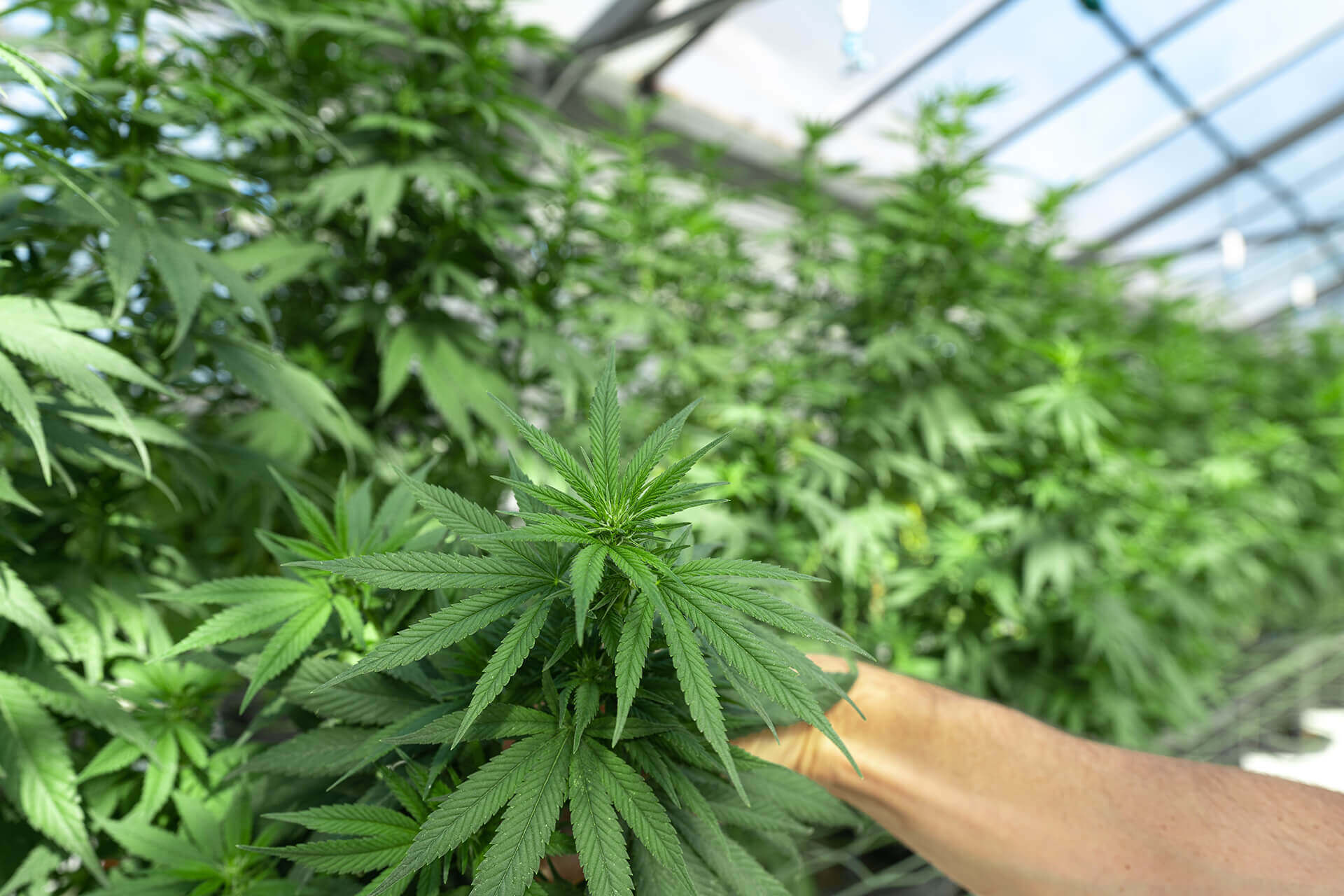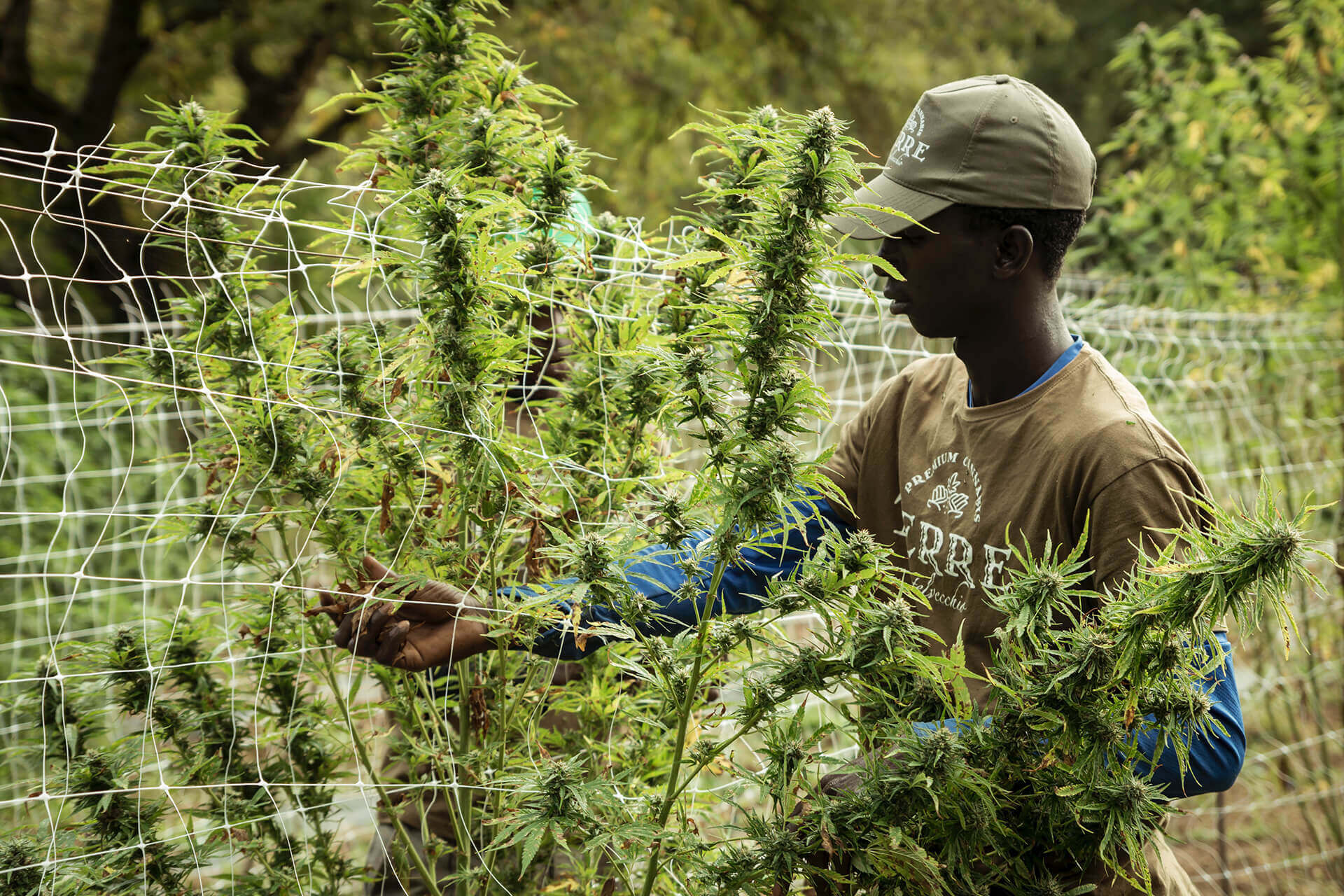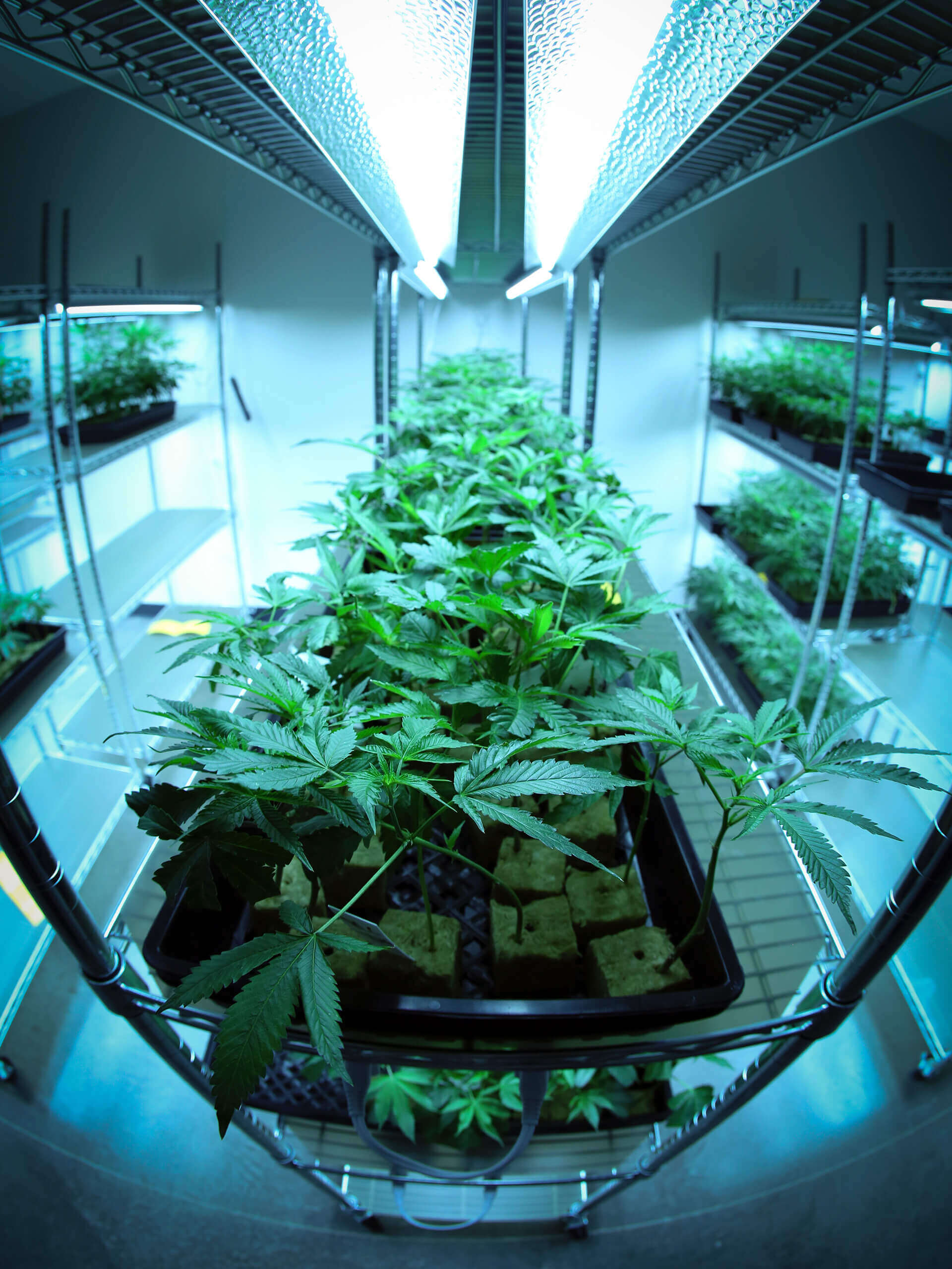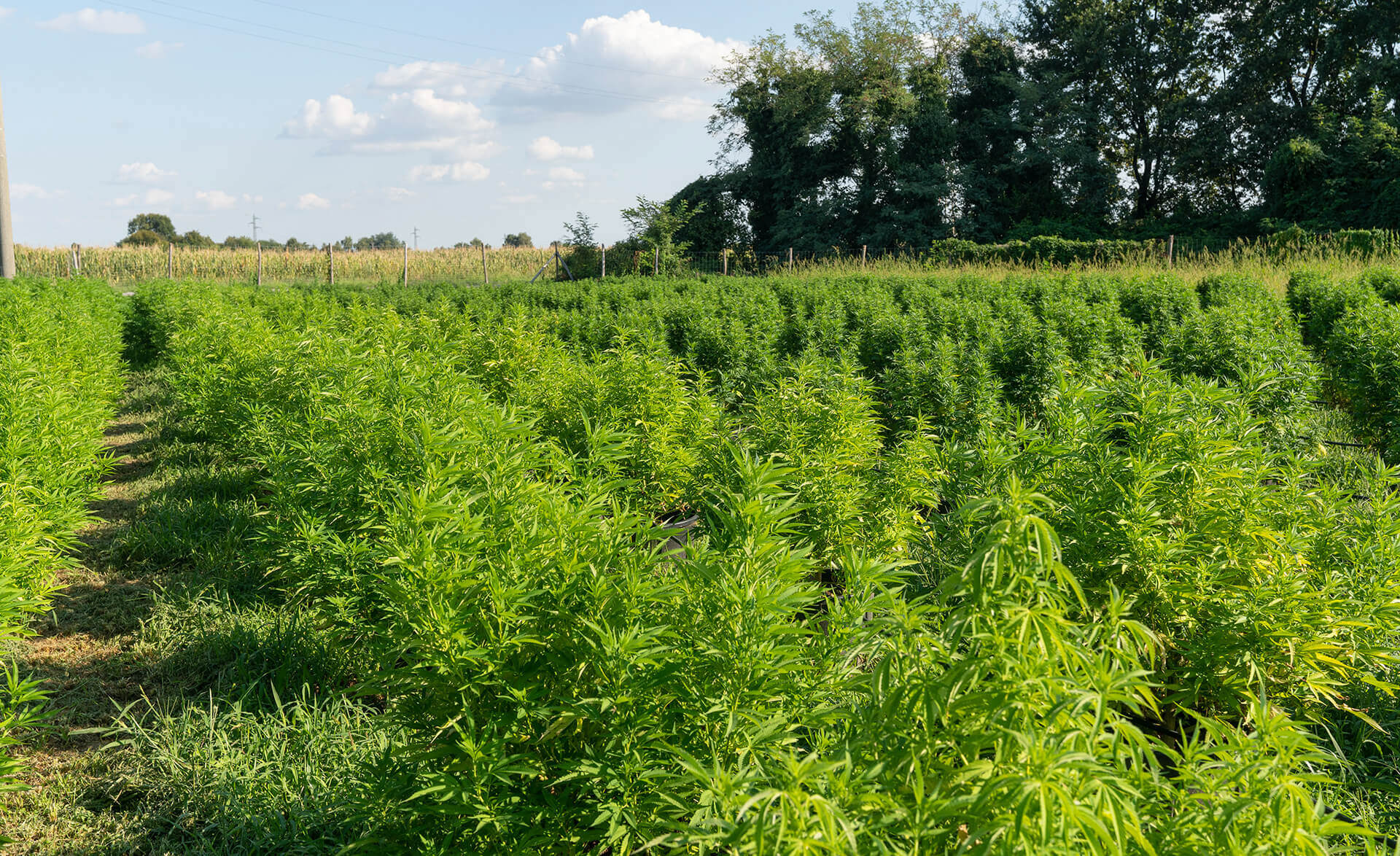Lucky for us, public perception of cannabis is not what it used to be in the United States. It is no longer seen as a harmful drug, but rather an herbal commodity with various recreational and medicinal benefits. Those of us who support cannabis legalization and consumption would like to think that the societal impact of cannabis is all positive, but this is not truly the case when it comes to the environment. Traditional cannabis cultivation and manufacturing are, like it or not, a contributor to climate change. In turn, the rise of global temperatures has affected and will continue to affect the cannabis industry. In this article, we will take a look at issues surrounding cannabis and climate change, as well as possible solutions.

What is Climate Change?
Climate change refers to long-term changes in temperatures and weather patterns. While these shifts can occur naturally, human activities have been the main contributor to climate change since the 1800s. This is mainly due to the burning of fossil fuels (coal, oil, and gas), which emits greenhouse gases that trap the heat from the sun. Clearing land and forests releases carbon dioxide, while increasing landfills for garbage increases emissions of methane, both of which are greenhouse gases. Other emitters include energy, industry, transport, construction, agriculture, and other land use. Greenhouse gas concentrations are currently at the highest levels in 2 million years and rising.
As a result of such high levels of emissions, the Earth is now 1.1°C warmer than it was in the late 1800s, with the last decade being the warmest on record. Based on current national climate plans, global rise in temperatures is projected to reach around 3.2°C by the end of the 21st century. Such rise in temperatures has dire consequences that will affect humans and other living creatures on the planet. These include severe droughts, water shortages, serious fires, melting polar ice, rise in sea levels, dangerous floods, intense storms, and the loss of biodiversity. If we do not limit greenhouse gas emissions and slow or stop climate change, the resulting natural disasters would have catastrophic effects, especially to vulnerable populations.

What Does Climate Change Have to Do with Cannabis?
The demand for cannabis has risen due to legalization, and half of that demand is met by indoor cannabis grow operations, resulting in detrimental effects on the environment. Like all agricultural activities, cannabis cultivation emits carbon dioxide, but indoor cultivation is much worse than its outdoor counterpart, producing 25 times the amount of carbon dioxide. For every kilogram of dried cannabis (around 1,000 joints), indoor cultivation produces around 2 to 5 tons of carbon dioxide. The annual carbon dioxide emissions from growing cannabis indoors are equivalent to those of 3 million cars. Not to mention, the energy used to power indoor cultivation is equivalent to powering 2 million homes.
In warmer climates, the need for dehumidifiers and air conditioning adds around 1.5 tons of emissions for every kilogram of product, while growing in colder climates adds to emissions due to its high indoor lighting requirements. Some cannabis growers even pipe in carbon dioxide as a way of speeding up growth (as plants use them in photosynthesis), further adding to emissions. Policymakers and cannabis consumers are yet to recognize the environmental impacts of the cannabis industry. There is currently very little regulation on emissions for cannabis cultivation. Researchers at Colorado State University, for example, have remarked that the cannabis industry’s carbon dioxide emissions (2.6 megatons) in the state are higher than those of the coal mining industry (1.8 megatons).

Why Should the Cannabis Industry Worry About Climate Change?
Everyone should worry about climate change, as it would harm the entire human population in the long term. For the cannabis industry, however, the resulting shifts in weather patterns and rise in temperature are likely to affect cannabis cultivation the same way it has the wine business and other agricultural-based industries. Cannabis growers will have to reconsider where and how to grow their plants to mitigate these impacts. Climate change-driven disasters like early freezes, fire and floods can be avoided by choosing plants with shorter growing cycles, as it would help growers get their plants from seed to sale faster.
Another important factor to consider is where to grow certain cannabis strains, as warming temperatures means they are know better suited to places where they have not typically grown in the past. For example, recent studies have shown that parts of Colorado are becoming drier due to climate-driven shifts in stream flows. In the Northeast, there have been shorter, warmer winters, as well as higher humidity and greater volumes of rain.
In addition, shifts in weather patterns result in changes in pests and pathogens, which also affect cultivation. Regardless of the choice of strains and growing locations, all these factors will complicate cannabis growing, with loss of crops and decline in harvests expected. The best solution would be to try to reduce the environmental impacts of cannabis cultivation altogether.
So What Can We Do as an Industry?
In a series of reports by the United Nations, thousands of scientists and government reviewers agreed that limiting global temperature rise to 1.5°C or lower would help avoid the worst climate impacts. This requires serious commitments, including from all commercial industries like cannabis, to limit greenhouse gas emissions. One obvious solution would be to move cannabis grow operations outdoor or to glass-walled greenhouses, which would reduce the need for grow-lights. In Colorado, for example, researchers have estimated that a wholesale shift to greenhouses would reduce greenhouse gas emissions by 42 percent, while switching entirely to outdoor production would decrease emissions by a whopping 96 percent.
At the same time, simply moving operations outdoors does not completely negate the environmental impact of cannabis. The same researchers at Colorado State University warn that beyond greenhouse gas emissions, outdoor cannabis cultivation results in illegal water diversion, pesticide use, and land-use change. A better solution would perhaps be regenerative outdoor grows, complemented by other sustainable practices. Regenerative, organic outdoor grows has been shown to have virtually zero carbon footprint as it helps sequester carbon in soil. With such practices, cannabis can be grown in a way that helps heal the environment, while also being commercially viable.
What is Regenerative Outdoor Cannabis Farming?
Regenerative agriculture is an emerging, wide-ranging movement to make farms capture more carbon than they emit. This is done through a series of techniques such as planting cover crops year-round as well as adding organic matter instead of plowing and clearing the soil for the next round of crops. These practices help microorganisms in soil to thrive, producing rich, nutrient-dense soil. This not only keeps carbon in the ground, but also makes the farms act similarly to a forest and pull carbon out of the air. Research suggests that every cubic inch of regenerative cultivation can sequester up to 3 billion tons of carbon annually. It also reduces the need for chemical fertilizers which pollute local water sources.

There is growing momentum from farmers, environmentalists and policymakers to encourage regenerative farming through policy and investments. These practices can be applied to cannabis farming, and in fact they already have been. One cannabis farm in California practice hügelkultur, an ancient German technique involving the use of trenches filled with logs, straw, compost and branches as the bottom layer for planting crops. Others practice polyculture, planting different vegetables and flowers with their cannabis crops. This not only reduces the need for crop-clearing and helps with pest management, but also gives the farm additional revenue streams.
Lastly, cannabis consumers can join in on the movement by being more mindful of the source of the cannabis products they consume. Taking into account where and how our cannabis was grown in our purchasing decisions affect our individual impact on climate change and the environment. By choosing cannabis grown through regenerative organic practices, we can help direct the cannabis industry towards sustainable, climate-friendly cultivation practices.